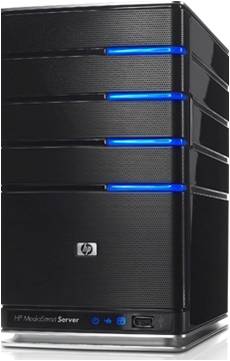Whether or not Microsoft has the right solution, the company has hit upon a problem in need of solving: how to store your digital stuff. Microsoft launched its Home Server at CES with the goal to create a storage hub for your media files. Some folks wonder whether consumers will buy into the idea of a home server, but with the explosion of storage-worthy digital media, there’s no question. In fact, I’m a little surprised there hasn’t been more mainstream coverage of the Home Server announcement (you know, beyond Engadget and Ars Technica) given its importance in signaling a new trend.
Let me give you my own house as an example. We have two active laptops (1 Apple, 1 PC), one active desktop (Apple), two digital cameras and three iPods. All of these devices generate and store media files that we want to preserve, preferably in our own home rather than on a remote server. My husband has managed this in a couple of ways, first by rigging an old Apple G4 tower to act as a server, and then by buying a Western Digital USB hard drive. Both solutions have worked (the USB hard drive is excellent), but the general public probably wouldn’t consider either, simply because the general public probably doesn’t think about digital storage at all.
Microsoft has the power to change that.
The Home Server may not be the solution that gets mass adoption, but with Microsoft behind it, it does have the potential to alert people that they’ve got a problem… and it’s about to get worse. (Think DVR set-tops, enhanced media centers, etc.)
As far as a solution that will get mass adoption, I believe it will have to have a few critical features: automated back-up, cross-platform functionality, and really really good search software. Bundle these together in an easy-to-use, affordable package, and you’ve got a winner. Check out how Home Server matches up in Engadget’s detailed post.
Coming up in Part 2 – Storing stuff on a much larger scale…
